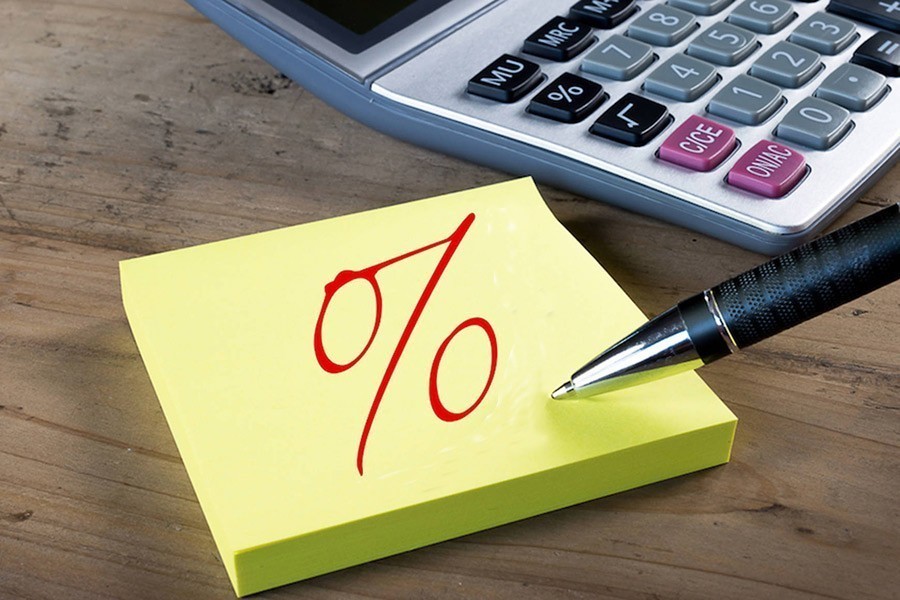There has been a sharp rise in Bangladesh's external borrowings over the last couple of years. However, a lower ratio of external debt to Gross Domestic Product (GDP) leaves a comfort zone for the country's policymakers. Many experts and economists also feel complacent as the debt-to-GDP ratio stands at a safe level. The central bank's latest statistics show that the external debt-GDP ratio reached 21.80 per cent at the end of last year, 2021, which was 19.50 per cent in the same period of 2020.
The discussion on sustainability of external debt emerged against the backdrop of a severe economic crisis in Sri Lanka. Policymakers have rejected the possibility of anything similar to the island country in Bangladesh, citing the low level of external debt as a ratio to GDP. There are other solid economic indicators, too, and all this indicates that Bangladesh is in a safe position. It doesn't mean no crisis will be there in the near future, especially when the global economy has already started experiencing some turmoil, mainly due to the Russia-Ukraine war. Some signs of crisis are also visible in Bangladesh now, and slowly those are getting more pronounced. Several belt-tightening steps taken by the government prove the point. So, a closer look at the external debt position is necessary.
Usually, external or gross external debt refers to money borrowed from a source outside the country and has to be paid back in the currency in which it is borrowed. So, external debt is the portion of a country's total debt that is borrowed from foreign lenders, including commercial banks, governments or international financial institutions. The International Monetary Fund (IMF) defines gross external debt as "the outstanding amount of those actual current, and not contingent, liabilities that require payment(s) of principal and/or interest by the debtor at some point(s) in the future and that are owed to non-residents by residents of an economy." When a country cannot repay its external debt timely, it faces a debt crisis, and when it fails to repay its external debt, it is in sovereign default.
Bangladesh's total external debt more than doubled to US$ 90.79 billion at the end of 2021, from $41.86 billion at the end of 2016. During the last five years since 2017, external debt had posted a double-digit growth annually, indicating a rapid rise in foreign borrowing. During the period under review, private external debt stood around one-fourth of the total debt portfolio. Again, of the total external debt, 80 per cent is long-term, and the rest, 20 per cent, short-term.
The Bangladesh government borrows from multilateral and bilateral lenders to finance budget deficit. Again, the country's private sector borrows commercially from international banks. Interest on private loan is much higher than on public borrowing. Whatever the amount of debt, it needs to be repaid according to the terms and conditions, and Bangladesh never failed to repay any single installment of any external loan, which makes the country a better and stronger borrower in the international arena.
External borrowing is also needed to finance external current-account deficit, which has been growing for the last couple of years. Foreign investment, aid and credit help fund the current-account deficit reflected in the country's external financial account. These two accounts, coupled with the capital account, create a country's overall balance-of- payments (BoPs) account. Thus, foreign debt is necessary to support the BoPs. That's why it is essential to review the external debt in terms of various components of BoP to get a better picture and understand the external-debt sustainability in a country.
In Bangladesh, the ratio of foreign-exchange reserves to total external debt dropped to 50.8 per cent in the past year from 59.2 per cent in 2020. The ratio has been declining since 2016, when it was 77.40 per cent. As the forex reserves have been depleting at a faster rate for the last couple of months, the ratio has dipped further though the latest comprehensive data on external debt are yet to be available. Enormous pressure of settling the increased bill of imports is the main reason. Though the central bank has already taken some steps to contain import, yet it may not lead to any significant drop in imports immediately. In the 11 months (July-May) of the past fiscal year (FY22), imports of goods (in terms of free on board) had jumped by 39 per cent while imports of services posted 33.51-percent growth. And the available figure of foreign- exchange reserves at $42 billion was sufficient to meet the cost of four-and-a-half months' import of goods and services at the end of May. The reserves, however, declined further, now coming down below $40 billion already, meaning it is now enough to cover around four months' imports.
To ease the pressure on reserves, the government will try to enhance the inflow of external funds shortly as some foreign money is already in the pipeline. Though the finance minister has said there is no plan to borrow from the International Monetary Fund (IMF) immediately, he did not rule out the possibility of doing so soon. Media reports suggest that the government already requested the IMF to provide a $4.50 billion worth of loan. In this connection, a team from the IMF has already visited the country. Therefore, it remains to be seen whether the government finally negotiates with the IMF to borrow $4.50 billion worth of funds to offset the BoPs deficit.


